True cryptocurrency trading experts simplify things; they repeat simple actions. This short-term trading model has a win rate of up to 98.8%. Learn to easily grow from 100,000 to 10 million by only using this one model.
I met a friend from Changsha who likes to trade spot and is particularly passionate about many techniques. In just a few years, he has grown from small to big and now makes a living by trading cryptocurrencies. I have modified his 'techniques,' and after practice this year, he has turned an initial capital of 170,000 into 19,930,000 in less than a year. I hope sharing this will help the fans!
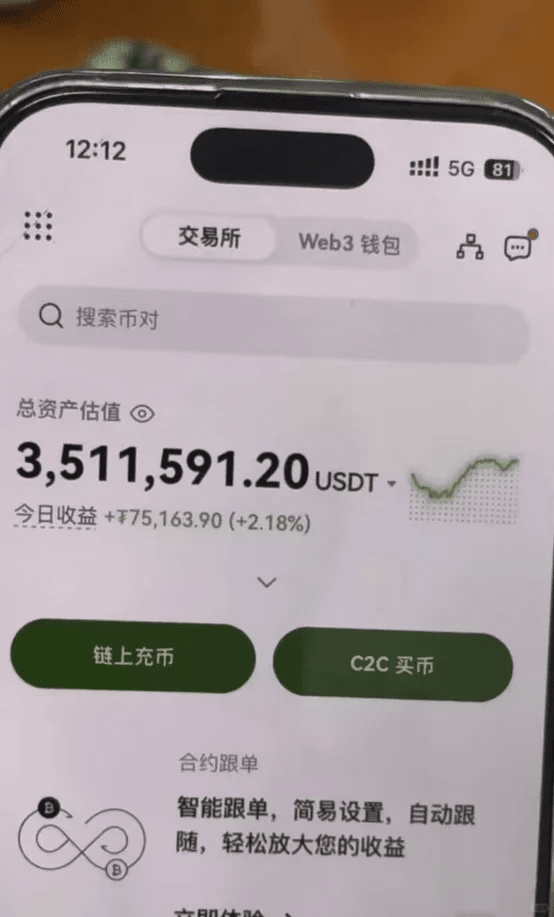
1. Validating the core logic of strategies and analyzing market adaptability
The underlying logic of long-term holding of mainstream value coins
Mainstream coins like Bitcoin have long-term annualized returns exceeding 150%, and after the 2024 halving, the inflation rate has fallen below that of gold (0.78% vs 1.5%-2%). Scarcity supports its status as 'digital gold.' However, note that after the 2024 halving, the price increase is only 31% (maximum 68.75%), and the current market may be in a consolidation phase, warranting caution against the risk of historical patterns failing.
Suggestions: Diversify positions into Bitcoin (60%), Ethereum (30%), XRP (10%), avoiding excessive concentration in a single asset. Refer to the 'Four Wallet Rule' of Shenyu; lock 60% of core assets in cold wallets, use 20%-30% of funds for swing trading, and keep remaining funds to handle extreme market conditions.Effectiveness and limitations of technical indicator applications
Moving average support/resistance: 5-day, 10-day, and 30-day moving averages are commonly used in traditional finance, but the high volatility of cryptocurrencies may lead to lagging signals. For example, in August 2025, Bitcoin received support and rebounded around 115K, but a decrease in volume and increase in price indicates insufficient upward momentum.
Lifeline trading methodology: Usually refers to the 30-day moving average; if it is effectively broken below, you need to reduce positions. However, it should be combined with trading volume (e.g., a volume spike below is more reliable) and market sentiment (e.g., FBI fishing cases show that manipulators may use indicators to create illusions).
Suggestions: Combine moving averages with on-chain data, for example, by monitoring the net flow of exchanges and miners' holdings through Glassnode to enhance the accuracy of trend judgment.
Practical details of risk control
Stop-loss settings: For spot trading, it is advisable to use 'dynamic stop-loss,' such as setting the stop-loss position 10%-15% below the cost price, or referencing Gate.IO's limit stop-loss feature to avoid emotional interference.
Position management: During a crash, if the 4-hour line does not break the 20-day moving average (e.g., in August 2025, Bitcoin's 20-day moving average is around 113K), you can use the 'pyramid adding' strategy: add 10% position on the first 5% drop, then add 20% position on another 5% drop; the total added position should not exceed 30% of the capital.
2. Key strategy optimization and response to market dynamics
The uniqueness of XRP and risk warnings
Technical analysis: In August 2025, XRP found strong support at $2.80-$2.95. If it breaks the resistance level of $3.65, it could trigger a 20% rise, but AI predictions show limited upward space (maximum $3.27).
Policy aspect: Be wary of changes in the SEC's regulatory attitude towards Ripple; historical cases show that low liquidity tokens are easily manipulated.
Suggestions: XRP positions should not exceed 10% of total funds; if it drops below $2.80, stop-loss immediately, and if it breaks $3.65, partial profit-taking can be done (e.g., reduce by 50%).
Improvement of the rolling contract method in spot trading
Traditional rolling contract risks: Contract rolling relies on high leverage (e.g., Liangxi's 60x leverage). Spot trading should discard leverage and adopt a 'profit reinvestment' strategy. For example, when Bitcoin rises from 115K to 117K, sell 10% of the position to lock in profits, then reinvest the profit into Ethereum during a pullback.
Practical case: In May 2025, an investor achieved a 130-fold return through three rolling contracts. The key lies in 'the first position should not exceed 20%' and 'profits open contracts.' However, for spot trading, adjust it to 'first position 30%, after profit, each additional position should not exceed 10%.'
Extreme market response mechanism
Black swan events: Refer to the FTX case; choose compliant platforms (e.g., XBIT decentralized exchange) to ensure self-custody of assets.
Liquidity management: Retain 20% in stablecoins (USDT/USDC) to meet buying needs during a crash. For example, if Bitcoin drops below 112K in August 2025 (long position liquidation line), you can use stablecoins to buy in batches.
3. Newbie learning path and common pitfalls avoidance
Learning resource filtering
Basic understanding: Learn about liquidity risk, market risk, and other management frameworks through Request Finance, and understand the underlying logic of DeFi protocols (such as Uniswap, dYdX).
Practical simulation: Practice stop-loss settings and position management with a virtual account on platforms like Gate.IO. Simulate trading for at least 3 months before going live.
Common pitfalls and psychological building
Chasing highs and selling lows: If XRP breaks $3.65 in August 2025, be wary of 'pumping and dumping'. Referencing the FBI case, manipulators may create false prosperity through wash trading.
Overconfidence: Avoid mimicking high-leverage operations like Liangxi; beginners should start from below 5x leverage and gradually increase their risk tolerance.
4. Specific operational recommendations in the current market environment
Short-term strategy (1-3 months)
Bitcoin: Enter long positions near 115K, set stop-loss at 113K, target 117K; if it breaks 117K, you can add to your long position with a small amount, stop-loss at 115K.
Ethereum: Moving in tandem with Bitcoin, building positions in batches below $3700, with a stop-loss at $3660 and a target of $3900.
XRP: Buy in batches within the $2.80-$2.95 range, reduce holdings by 50% if it breaks $3.65, and target the remaining position for $4.
Medium-term strategy (3-12 months)
If Bitcoin breaks 120K and holds above the 30-day moving average, you can transfer 10% of Bitcoin from cold wallet to warm wallet to participate in DeFi staking (annualized 5%-18%).
Focus on Uniswap Layer 2 expansion (Unichain), Sui ecosystem DeFi applications, and timely allocate related tokens (such as UNI, SUI).
Long-term strategy (1 year or more)
Continue dollar-cost averaging Bitcoin (e.g., 10% of monthly salary), using dollar-cost averaging (DCA) to smooth out fluctuations.
Allocate 1%-2% of funds to 'experimental assets' (e.g., NFTs, new public chain tokens), but strict stop-loss is required (e.g., exit immediately if losing 20%).

1. Support and Resistance Lines
Support and resistance are points on the chart that withstand continuous upward or downward pressure. Support levels are typically the lowest points in all chart patterns, while resistance is the highest point (peak) on the chart.
In addition, support and resistance levels are typically not 'exact' levels; it is best to view them as areas.
2. Trend Lines +
Although trend lines are one of the most common methods in technical analysis, not all traders use trend lines, as most traders may not be able to draw correct trend lines.
Generally speaking, an upward trend line connects the low points of each fluctuation, while a downward trend line connects the high points of each fluctuation.
3. Judging the oscillation
If you have already learned and can mark the support and resistance areas on the daily chart, the next step is to use the high and low points of oscillation to determine the oscillation.
There are mainly three types of oscillations: upward trend, downward trend, and range trend.
1. [Upward Trend]
Higher highs and higher lows; the chart below is a typical upward trend:
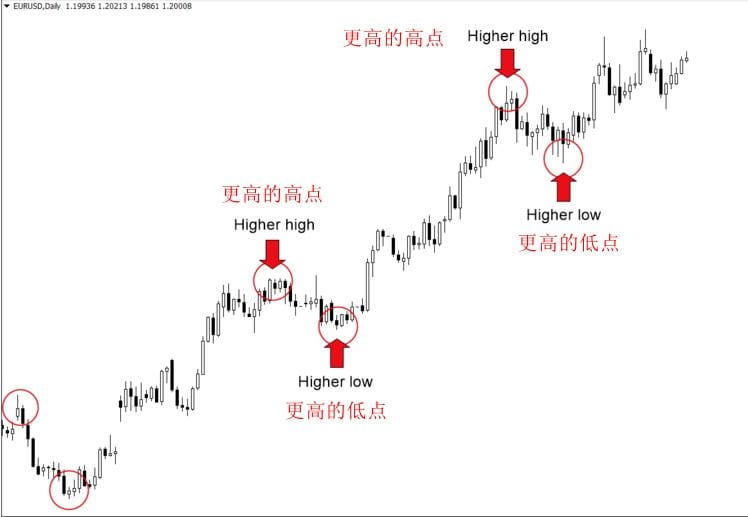
In the above figure, each fluctuation high point is higher than the previous one, so you can buy in this bullish trend.
2. [Downward Trend]
Lower highs and lower lows; the chart below is a typical downward trend:
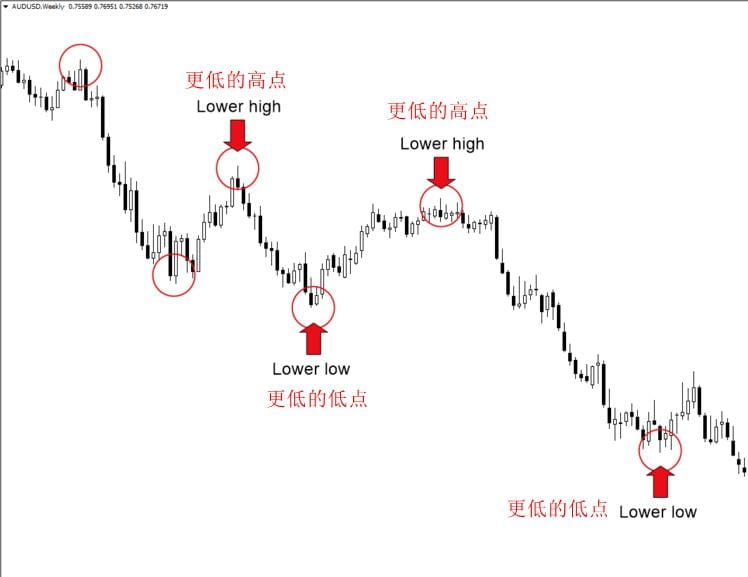
In the above figure, each fluctuation high point is lower than the previous one, at this point, you can sell.
3. Range Trend
Horizontal movement, also known as consolidation period, as shown in the figure below:
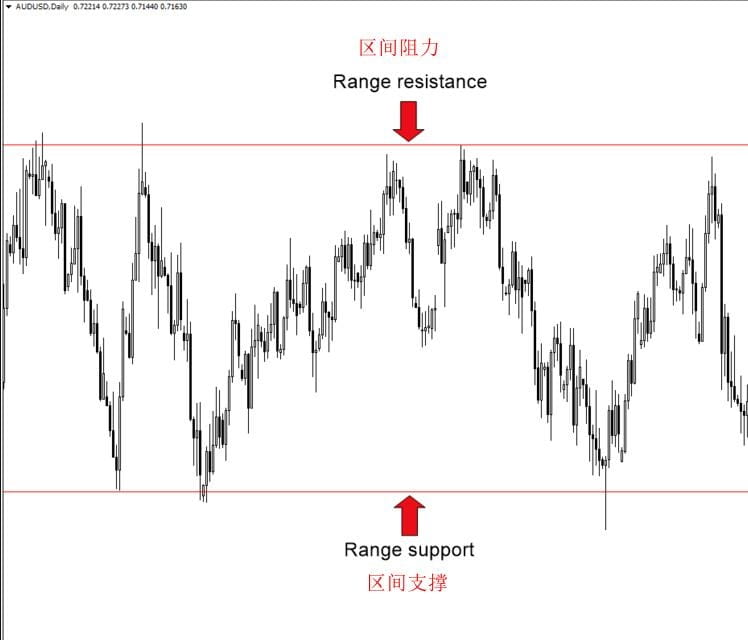
Range trends are the most common type of trend. Although there is no bullish or bearish trend in the above chart, oscillation traders can still.
Profit within this range may even be easier than in the other two oscillating trends.
What should be done?
Utilizing support and resistance levels. As shown in the figure below, note the two pin bars in the chart:
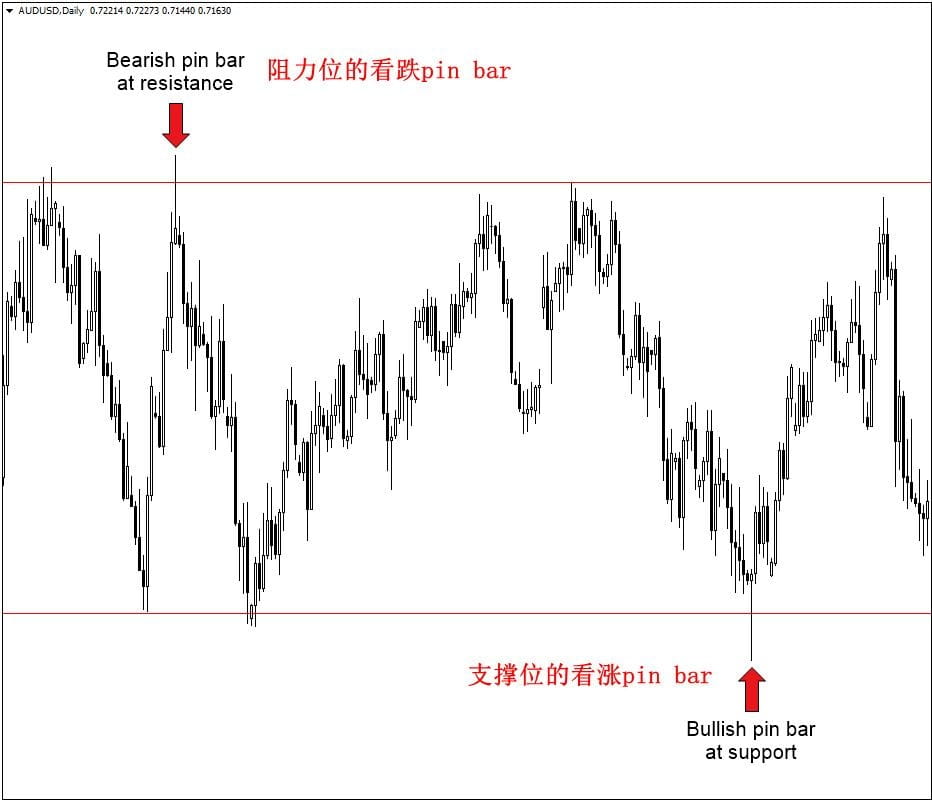
4. Looking for price action signals
By following the three steps above, you have identified the current oscillation on the daily chart.
1. If the market is in an upward trend, then you should start paying attention to key support buy signals, as shown in the figure below, where a bullish pin bar appears at the key support level.
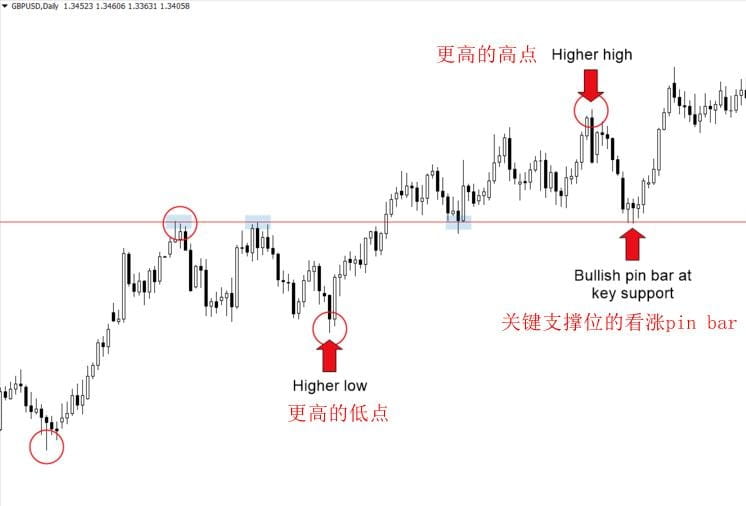
The bullish pin bar in the above chart is a buy signal, indicating that we can profit from the ongoing upward trend in the market.
2. If the market is in a downward trend, then you should focus on resistance level sell signals, as shown in the figure below:
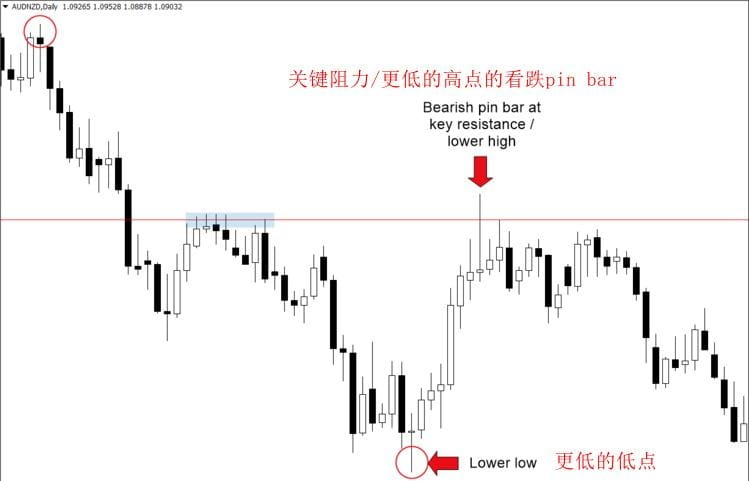
We can treat the bearish pin bar in the image as a sell signal.
In fact, for swing traders, capturing the entire swing is very difficult. What we can do is pay as much attention as possible to swing changes and patiently wait until we confirm the price trend before entering a trade.
5. Determine exit points
Determining the exit point has an important prerequisite: establish take-profit and stop-loss before entering. This is because once you enter, your emotions will be influenced by market changes.
So, how do we determine the exit point?
It's simple, still relying on support and resistance levels, as shown in the figure below:
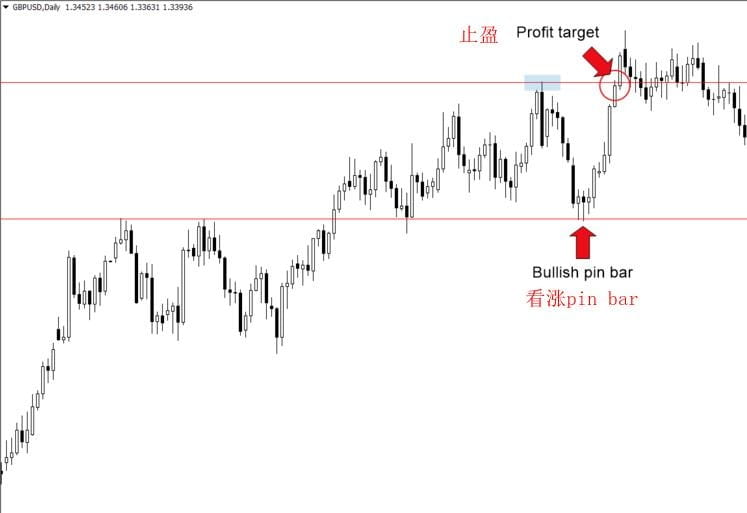
The above figure is a GBPUSD daily chart: it is clearly an upward trend, and the price has exceeded our set profit target.
When this happens, there's no need to be frustrated; we have captured most of the upward trend. Remember, being greedy in trading is not advisable.
Let's take another look at the AUDNZD daily chart: we can also determine the take-profit point, which is the exit point, based on support and resistance levels. As shown in the figure below.
As shown:
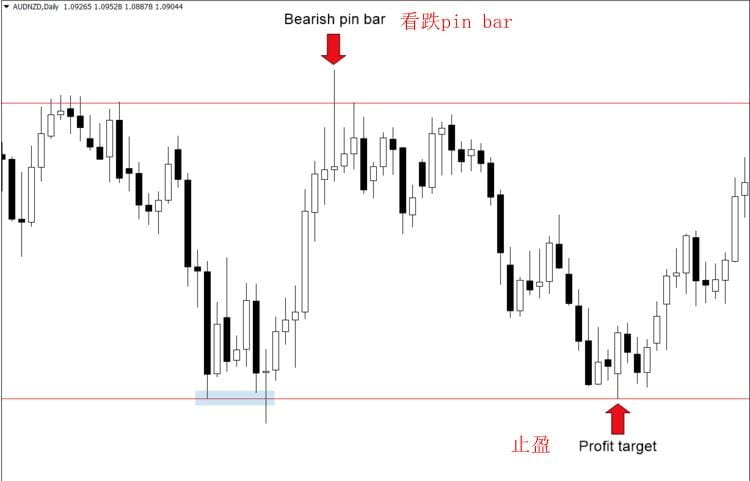
In summary, support and resistance areas and trend lines are the foundation of all trading setups. Once these are determined, entry and exit points become clear.
6. Calculate and manage risks
Currently, risk is usually calculated using R multiples. For example, a stop-loss of 100 points and a take-profit of 300 points gives a risk-reward ratio of 3R. If your capital is 100.
If the dollar profits $500, the risk-reward ratio is 5R.
Risk management essentially is stop-loss and take-profit:
Stop-loss: The best stop-loss position is right at the top or bottom of the pin bar.
If a bullish or bearish engulfing pattern appears, it is best to set the stop-loss position 10 to 20 points above or below the candlestick.
Take profit: Take profit is still related to key support and resistance levels. For swing traders, the key to profitability is to capture the fluctuations between support and resistance levels. If there is an upward trend in the market, and a bullish pin bar forms at the support level, then set the take profit at the next key resistance level.
In an upward or downward trend, grasp the buying and selling points of contract cycles. If you are currently feeling helpless or confused in trading and want to learn more about cryptocurrency-related knowledge and first-hand information, click on my avatar to follow me; don’t get lost! Clear market vision gives you confidence in operations. Steady profits are far more realistic than fantasizing about getting rich.